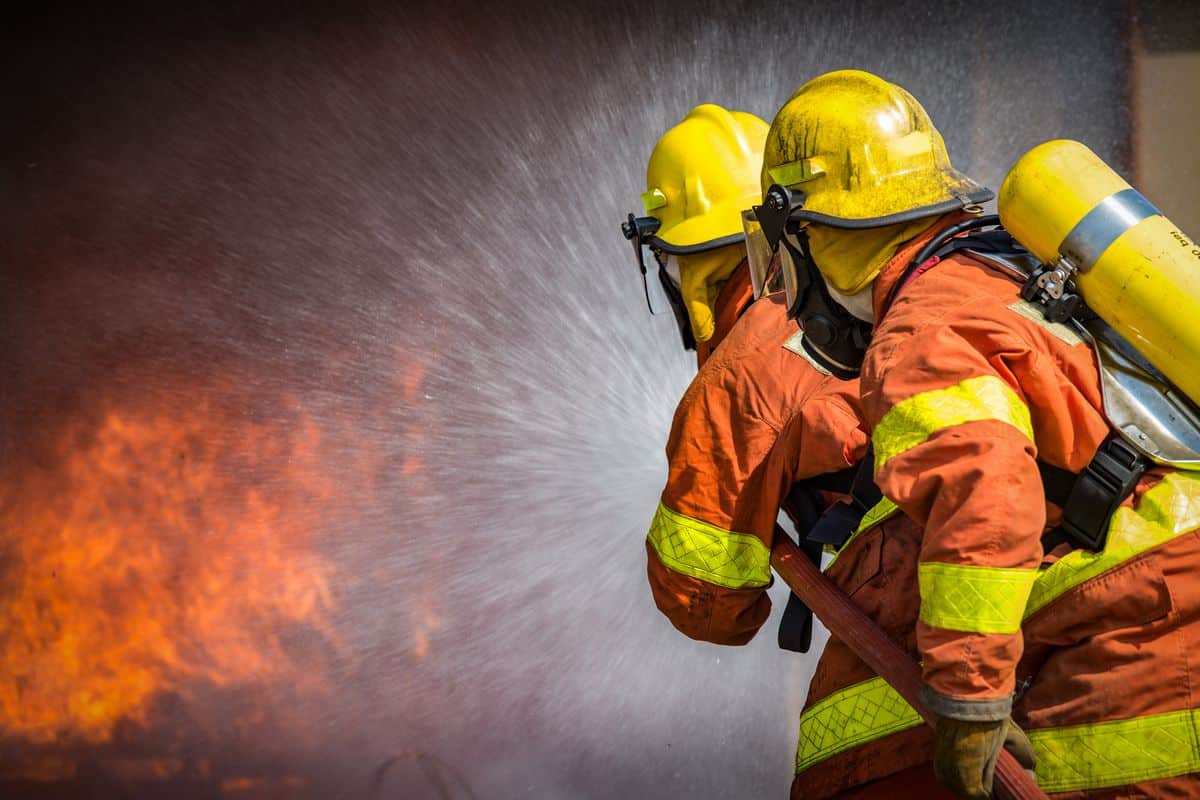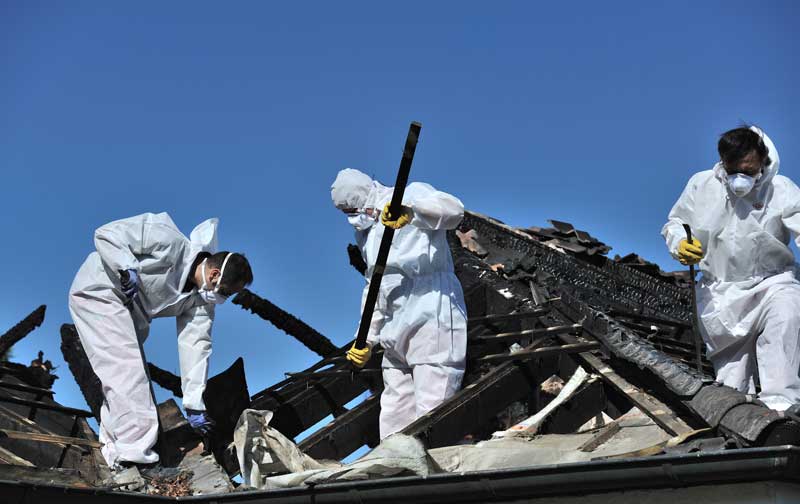Water Damage Questions
There are many ways that water can find its way into your home. The most common are from water leaks associated with burst pipes or valve failures. Foundation leaks and poor drainage around the home can also cause similar problems. Burst pipes and sewage backups are particularly challenging, as they can accumulate several inches of water at a very rapid rate.
The most important step is to cut off the water supply as quickly as possible. The safest route is to shut off the main water supply valve. If you don’t know where it is located, spend some time getting familiar with the plumbing layout in your home. That’s a scavenger hunt you don’t want do while water is filling up your living room floor. Steer clear of the pooled water areas as there is no way of knowing if the water has made contact with any electrical outlet. Shut the water off and get to a safe, dry area.
Water can pool quickly and soak through anything it comes into contact with. This becomes a major issue when the water is from sewage backups or flood waters, as it can contain many harmful contaminants. Any organic materials like wood or textiles soaked with this liquid would need to be removed, restored or replaced. Even in cases with clean water supplies, mold is a major factor that can have many adverse health effects. The key is to get the water out as quickly as possible. The longer the water remains, the more problems it will cause.
The first step is to stop the source of the flooding. Pumps are brought in to remove the standing water while all compromised materials are removed from the home. This includes furniture, carpets, padding and even construction materials like wood, sheetrock and insulation. Once all the water and compromised materials are removed, commercial dryers are brought in to throughly dry out all the affected areas – a process that can take several days. In addition, the area will be inspected for mold and other microbes. Disinfectants are used for basic cleanup, but more material repair or removal may be necessary for larger mold colonies
This all depends on the amount and location of the water damage. Smaller floods can be resolved in a day or two while extensive flooding can take as many as 7 days.
Fire Damage Questions
The first step is to secure the home. By all means contact your insurance company to get the claims process started, but don’t wait to get the house sealed up and secured. Give us a call and we will send a technician to evaluate the damage and get the house protected from any further damage. We know the claims process inside and out, and will work with you and the insurance company to get the most out of your policy.
Possibly, but your insurance company covers the cost to get your home professionally repaired, so why not take full advantage of it? Fire damage can go well beyond basic cosmetic repairs, and having a professional perform the work is the best way to get the most comprehensive repairs from your insurance claim.
An essential first step is the repair or replacement of your HVAC system. Smoke particles have accumulated in the system during the fire, and running it can release these harmful particles back into the air. The next step is to remove all the burnt furniture, fixtures and building materials in the home. This includes a thorough inspection of framing and subfloors to determine what needs to be repaired or replaced. Framing materials are dried throughly and sealed before replacing drywall, panel or flooring. The deodorization process is continuous throughout the reconstruction project. All undamaged drywall is sealed and repainted using multiple coats of paint. All of the salvaged furniture and fixtures are treated throughly before returning them to the restored home.
This all depends on the extent of the fire damage. Smaller fires contained to single room will have the fastest recovery times, but could still take weeks to properly repair, reconstruct and deodorize the home. Larger restoration projects can take months – this is not a job to be rushed, as your family’s long term health and safety is our primary concern. We leave no stone unturned when it comes to returning your home to its original condition.
Absolutely. Dealing with the insurance company can be challenging – how would you know all the intricacies of claim management when you’ve never experienced a fire loss? Luckily, most people never have to go through this process, but it puts you at a distinct disadvantage when dealing with your claim. Let us go to bat for you – we know how to get the most out of your policy and will advocate on your behalf.
This is a key part of your insurance policy – known as additional living expense coverage. It will differ from one insurance policy to another, but essentially it covers the difference between your normal living expenses and any additional costs you may incur. Your policy may have several limits in place, and we would be happy to review this with you to let you know what to expect. Be sure to keep all receipts during the time you are displaced.
Again, this is going to be detailed in your policy coverage, and we would be happy to review this with you. A key distinction is the Actual Cash Value (ACV) versus Replacement Cost Value (RCV) for your belongings. ACV is the value of the property when the damage occurred. If you have older appliances, they would not be worth what you paid for them originally. RCV is what it would cost to replace that item today, regardless of its current worth. In either case, a thorough inventory is essential, and we will help you prepare this information to get the most out of your claim.
Our Restoration SERVICES
Fire & Smoke
RESTORATION SERVICES
water damage
RESTORATION SERVICES
MOLD REMOVAL
RESTORATION SERVICES
PLUMBING
SERVICES
Storm Damage
RESTORATION SERVICES
SEWAGE
REMOVAL SERVICES
EXPERT WATER, FIRE, AND STORM DAMAGE RESTORATION SERVICES
In Atlanta, GA, and Surrounding Cities

Fire Damage Restoration Process
Since fires are often put out with high-pressure water, it is common for a house to experience both fire damage and water damage. Fortunately, Atlanta Water and Fire Damage has water restoration services in addition to our fire damage restoration. During fire restoration we will be sure to pay attention to any potential water damage.
There are several steps to fire damage repair. First, we must assess the damage. Once it’s safe to step foot on the property, our fire damage team will figure out where the damage is and check for excess water, as well as how deep the flames of the fire went into the structure of the home. After the assessment, it may be necessary to fence off the property while it’s being repaired, as well as tarping the roof and sealing off any areas that were not affected by the fire so they don’t get contaminated.
A major part of fire restoration is the cleanup itself, which involved many hours of manual labor by contractors at Atlanta Water and Fire Damage. Every inch of the affected area needs to be properly and meticulously cleaned.
Finally, any necessary construction needed to return your home or business to its pre-affected state will be performed. This could entail many different tasks such as replacing the roof, replacing drywall and flooring, or replacing countertops and other fittings.
If you’re unsure of how to handle your fire damage clean up, contact Atlanta Water and Fire Damage Restoration as soon as possible and we will guide you through the process and get your home or business back to normal.

Emergency Disaster Restoration Specialists
Call Us Now for Immediate Assistance, 24/7/365
100% Satisfaction
Guaranteed
Friendly
Technicians
Locally Owned
& Operated
24/7
Support
